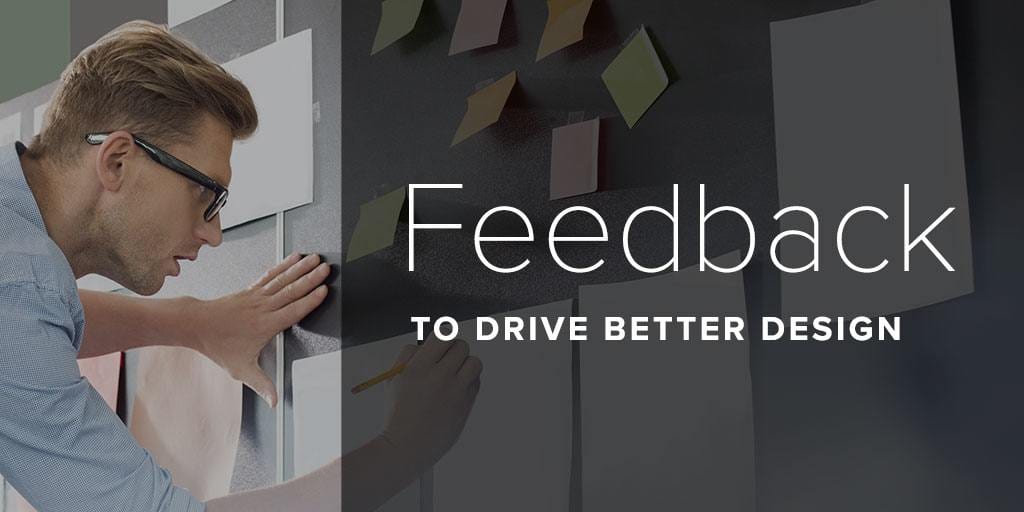The best website design comes from conversations. Design feedback should be a part of that dialogue.
At Forge and Smith we don’t throw back a curtain and reveal your “finished” website. We take a collaborative approach to our design process, so that our clients are involved every step of the way. Nothing moves forward without input and approvals.
We also break our process into small easy-to-digest deliverables like site map, style tile, and prototypes. Throughout the process we maintain an ongoing dialogue to ensure the final design is everything you dreamed it would be. But whether you work with me or with another designer, there’s a part of this dialogue that’s often overlooked, hidden, or even feared: design feedback.
While there are hundreds of thousands of articles on “how to choose a designer” or “creating a website design brief”, there are few resources explaining how to actually talk to that designer.
Feedback is one of the most critical pieces of the process; reviewing, critiquing, discussing, and questioning decisions are all crucial to producing a web design that best represents your brand’s needs and goals. Great feedback fuels great design.
The creative process can be daunting, especially if this is your business’ first time working with a designer. Let’s walk through my most important tips for giving feedback to drive better design.

Post Contents
1. Speak. Your. Mind.
If you have a question, ask it. If you have a concern, raise it. If there is something you don’t like, tell us!
Design is meant to evoke emotions, but your site should be sparking the right ones. If it’s not, we need to know. We don’t offend easily. A seasoned designer has presented and been critiqued countless times before; it’s what we do, and part of our job. A good designer handles the harshest of feedback with humility and understanding.
Remember: we share the same goal. Solving your problem, with our craft, in the best way possible. A concern for you is also a concern for the designer.
2. Value your own input
We aren’t always going to nail it on the first try. In fact, that case is rare (and often reflects a disengaged client). To provide the best solution, a good designer will rely on client insights.
You are an essential part of our process — don’t underestimate that. Your design feedback and questions make our designs better, and make us better designers in the end.
All stakeholders on the client side should be engaged with each and every step of the process, and take delivery of feedback seriously.
3. Let the designer design
We all have our specialties. You are the subject matter expert on your business, and the designer is the expert on design. You’re the best person to address problems in your field of expertise, just as the designer is on web design.
When providing feedback, you don’t need to provide the solution. If something in the website design doesn’t work for you, let the designer reevaluate and address it.
Providing constructive feedback, rather than direct creative direction, will allow the design to take another approach — and provide a better solution. As an example, “the logo is looking lost” provides your view of the problem, rather than a direction and suggested solution to “make the logo bigger”.
Let the designer provide a solution, it’s what you’re paying us to do. Opening up that discussion will foster understanding and result in better designs and everyone winning in the end.
4. Open communication
Being available to your designer for any questions, providing feedback and having discussions will make the design process flow smoothly and more quickly! Lengthy delays in responses or bouncing design issues to someone else on your team to take over resolving can result in confusion that translates to your project.
Asking questions and being open and available for discussion as part of the feedback process will allow the designer to walk you through their thought process and share their insights. It also ensures that concerns are addressed and resolved.
5. Consider your audience
The most difficult feedback to address is based on hunches, guesses and personal bias. A good website designer will have insights, have done their research, read the latest articles and studies, know the trends, and be mindful of your demographics.
Consider if your requests are a personal preference, or if they’ll also impact your visitors. While you might think your users are exactly like you, that is rarely the case. They come from different backgrounds, see things in different ways, with different understandings of technology — which influence how they interact with your site. A personal bias may alienate or confuse potential new customers.
Know your business, know your brand and your audience, and use those insights to drive your decisions through the process. It’s about what your intended viewer thinks, feels, and is motivated to do when landing on your site.
I hope you’re feeling empowered to have better conversations with your designers. We always welcome feedback about our work and processes. Check out our website case studies and how we work – we can’t wait to hear what you think!





